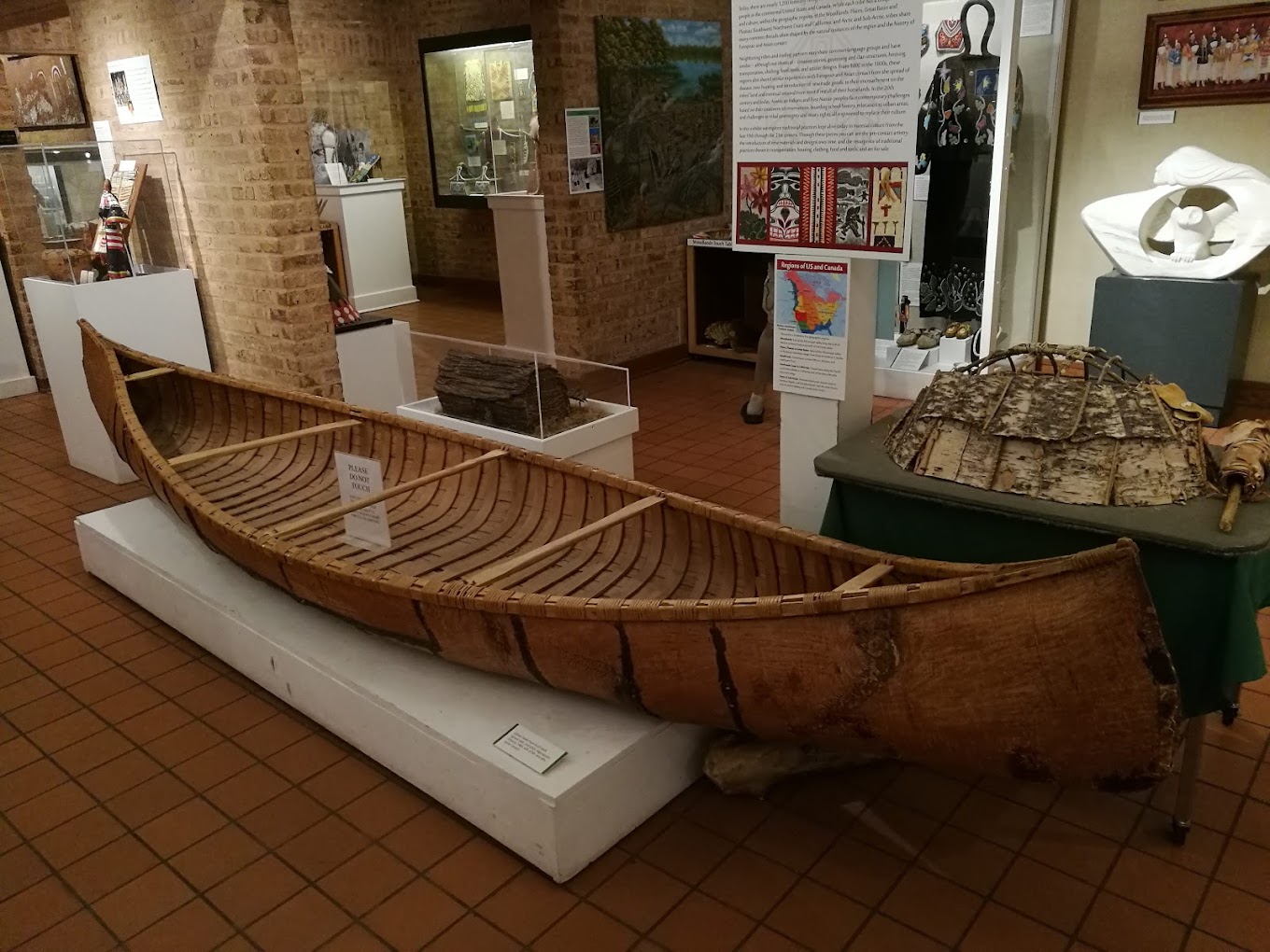
- Details
- By Native News Online Staff
The Mitchell Museum of the American Indian is proud to announce its rebranding as theGichigamiin Indigenous Nations Museum, marking a transformative milestone in its 47-year history. This new identity reflects the museum’s evolution into a majority Native-led institution dedicated to honoring the rich histories, cultures, and languages of Indigenous communities across Chicago and the Great Lakes region.
The name "Gichigamiin," meaning "Great Lakes" in Anishinaabemowin (Ojibwe), a central Algonquin language spoken by the Anishinaabe people, was thoughtfully selected in collaboration with local Indigenous communities. Pronounced /GI-CHE-GAH-MEAN/, the name authentically represents the region and the cultures the museum celebrates.
"The new name not only grounds the museum geographically, it signifies an essential step in reclaiming and revitalizing Indigenous languages and cultures," Executive Director Kim Vigue (Menominee/Oneida) said. "By embracing an Indigenous name, we honor the remarkable resilience of the generations before us who courageously faced assimilation efforts aimed at silencing their voices and traditions. This rebranding marks a significant step toward healing and celebrating the Indigenous histories of the Great Lakes region and the vibrant cultures that continue to thrive today."
The rebranding process involved extensive collaboration and community engagement, led by Bumper Lanes, a Native women-owned marketing firm. Over nine months, nearly 700 participants, including members of the Indigenous community, museum partners, and the public, contributed through surveys and focus groups. Their feedback revealed overwhelming support for a new identity rooted in Indigenous values and languages.
"As we step into this new era, we are honored to share the stories and traditions of Chicago's diverse Native community and the Indigenous Nations of the Great Lakes. Our museum will serve as a unique venue and vital resource for education, appreciation, and connection, inviting all to experience the depth and richness of the people who have occupied this land since time immemorial," stated Andrew Johnson (Cherokee Nation), museum board treasurer.
The museum’s new logo, created by graphic artist Crystal Mzhickteno, a citizen of the Prairie Band Potawatomi Nation, features a Woodland floral motif and ribbon work in shades of blue and green. The design incorporates elements that symbolize the Great Lakes’ cultural significance and natural environment.
To further its mission of amplifying Native voices and narratives, the Gichigamiin Indigenous Nations Museum will launch two exciting programs:
- “Living Stories: Contemporary Woodland Native American Art,” a new exhibition opening January 27, 2025.
- The Indigenous Gardening and Foodways Initiative, featuring an expanded native garden, a teaching kitchen, and a related exhibit launching in spring 2025.
For more details about the rebranding and upcoming programs, visit www.gichigamiin-museum.org.
More Stories Like This
Chickasaw Holiday Art Market Returns to Sulphur on Dec. 6Center for Native Futures Hosts Third Mound Summit on Contemporary Native Arts
Filmmakers Defend ‘You’re No Indian’ After Demand to Halt Screenings
A Native American Heritage Month Playlist You Can Listen to All Year Long
11 Native Actors You Should Know
Help us defend tribal sovereignty.
At Native News Online, our mission is rooted in telling the stories that strengthen sovereignty and uplift Indigenous voices — not just at year’s end, but every single day.
Because of your generosity last year, we were able to keep our reporters on the ground in tribal communities, at national gatherings and in the halls of Congress — covering the issues that matter most to Indian Country: sovereignty, culture, education, health and economic opportunity.
That support sustained us through a tough year in 2025. Now, as we look to the year ahead, we need your help right now to ensure warrior journalism remains strong — reporting that defends tribal sovereignty, amplifies Native truth, and holds power accountable.
 The stakes couldn't be higher. Your support keeps Native voices heard, Native stories told and Native sovereignty defended.
The stakes couldn't be higher. Your support keeps Native voices heard, Native stories told and Native sovereignty defended.
Stand with Warrior Journalism today.
Levi Rickert (Potawatomi), Editor & Publisher


